In the event of a disaster, ensuring business continuity becomes your organization’s top priority.
Thankfully, 96% of organizations that have an effective business continuity plan (BCP) will survive a crisis.
But what exactly makes a BCP effective?
In this article, we’ll discuss the six best practices in creating a business continuity plan. By following these principles, you can effectively protect your business when disaster strikes.
What is a Disaster?
Disasters can be classified as either natural or man-made. Let’s quickly explore both to understand the risk they pose to your business.
Natural Disasters
Natural disasters account for 5% of all downtime events and include things like storms, fires, floods, and even certain IT incidents.
According to the Federal Emergency Management Agency (FEMA), 40% of small businesses don’t survive natural disasters.
Of the remaining 60%, 52% reported that a full recovery took three months. The combination of lost revenue and capital revival verges on immeasurable.
For context, a downtime event can cost between $10,000 and $5 million per hour depending on the size of the business.
Man-Made Disasters
The vast majority of business disasters are man-made. This category includes both accidental and deliberate downtime events.
‘Accidental’ refers to incidents caused by the likes of human error or technological malfunction; ‘deliberate’ describes malicious events such as cyber attacks and insider threats.
|
Interested in learning more about business continuity best practices? Check out these blogs: |
Top 6 Business Continuity Best Practice Recommendations
Below, we review six business continuity plan testing considerations and best practices.
1. Host Your Critical Data Off-Site
Your primary data center should not be your only data center. Setting up a secondary location, usually by migrating to a cloud that contains full copies of your critical data is essential to ensure business continuity.
The minimum recommended distance for a secondary data center is 150 miles away from your primary one. This will sit beyond the radius of most natural disasters; however, the further the better.
2. Differentiate Between Your Business Continuity and Disaster Recovery Plans
It’s important to recognize the difference between a BCP and a disaster recovery plan (DRP).
A BCP is a guide to maintaining operational continuity both during and in the aftermath of a crisis. A DR plan, on the other hand, aims to restore IT assets to operational status during a crisis. As such, a DRP is actually just one pillar of a comprehensive BCP.
When business continuity and disaster recovery plans are executed correctly, your company will be back up and running in no time. It’s also worth taking the time to understand disaster recovery testing best practices.

3. Test Your Plan Regularly
Many businesses invest serious time, money, and energy into developing a comprehensive BCP. Unfortunately, just as many of them overlook the most important part: testing.
When it comes to business continuity testing best practices, aim to test your plan often and thoroughly. Between once a year and once a month is recommended, depending on the size and complexity of your IT environment. A review of the benefits and risks of IT outsourcing by CloudSecureTech can be pivotal, as external partners can bring fresh perspectives and expertise to the testing process, potentially uncovering vulnerabilities that internal teams might overlook.
Moreover, partnering up with IT consultants that help you with rehearsals whenever a new component is introduced into your IT ecosystem or a big organizational change is made. By maintaining an awareness of each IT asset and its relationships, your BCP will stay up-to-date.
4. Empower Your Employees
Employees are at the backbone of your business. As a result, the successful implementation of your BCP rests largely in their hands. It’s your job to make sure those hands are competent.
One of the biggest mistakes companies make is in not providing adequate training to relevant personnel. Equipping them with the right knowledge and skills empowers them to effectively handle any disaster. This is one of the most surefire ways to quickly resume business functions and reduce expensive downtime.
5. Consider Exploring New Technologies
In the first tip, we mentioned the importance of storing your data in a location other than your primary data center. While a second – and even a tertiary – data center is a good investment, there are other options to consider.
Cloud computing has become a secure, reliable, scalable and cost-effective part of modern IT strategy frameworks for many businesses. By keeping copies of your critical data in the cloud, you guarantee unhindered access in the event of a crisis.
Develop a Plan Based on Business Continuity Best Practices
Protect your business and its critical data by partnering with TAG. |
6. Include a Communications Plan
Business continuity represents order in the face of chaos. That said, even the best-laid plans are subject to unpredictability. As circumstances change and employees panic, good communication becomes increasingly vital to business continuity.
This is where a communications plan comes in, ensuring that all relevant personnel can receive instructions and check-in, no matter where they are. Typically, this is accomplished by mass text or call broadcasting. Though this may seem obvious, don’t underestimate how fast errors can compound in times of stress.
Make the Most of Business Continuity Best Practices With a Proven Partner
When disaster strikes, business continuity planning is vital to your organization’s survival. By adhering to these best practices, you can rest assured knowing that your business can weather any storm, both literally and figuratively.
If you need expert advice on business continuity, the Technology Advisory Group can help. For over 25 years, we have helped businesses across Rhode Island and New England create and execute business continuity plans tailored to their needs.
Start your journey to better business continuity planning by looking at our MSP pricing models and contacting us today for more information.
Schedule Your Cloud Services Consultation
Ready to make a move to the cloud? TAG is ready to help with any or all cloud services from a private cloud, public cloud, or Microsoft 365 services.
